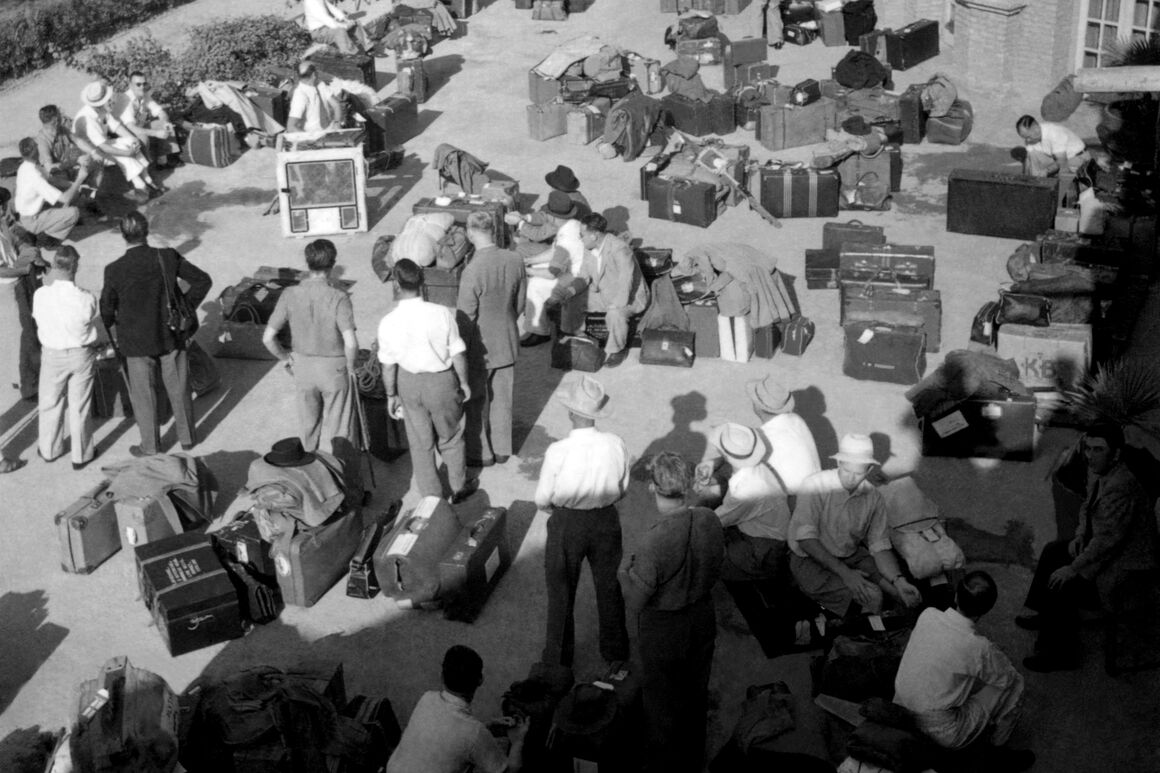No to British Firms
Britain was so deep-rooted in Iran’s petroleum industry that their expropriation in 1951 could not be underestimated. It would be enough to briefly review Iran’s petroleum industry. D’Arcy and his allies had won the Oil Concession after intense negotiations. Britain had saved the 1919 deal with endeavor and maintained their presence in Iran until the Pahlavi II dynasty. British troops were using Iran’s oil during WWI and WWII. Britain owed its war triumph to Iran’s oil.
Aside from that, following the death of Nader Shah, Britain went on a carnage spree in a bid to strengthen their physical presence in Iran. All through the Zand and Qajar dynasties, Britain designed plots for the Iranian territory. It was unbelievable for them to be defeated by Prime Minister Mohammad Mossadeq in court.
Nejati writes: “After the nationalization of oil, Britons were still present in Iran. Therefore, the primary action was to expel them. To that end, the Oil Committee of National Assembly adopted a 9-point law on oil nationalization in 1951, later known as expropriation law. The law also passed by the Senate. This important law entered into force under Mossadeq. The National Assembly named a committee to supervise the implementation of the law. The committee comprised Ali Shayegan, Abdollah Moazzami, Allahyar Saleh, Hossein Makki and Naser Qoli Ardalan. The Senate in turn appointed MortezaQoli Bayat, Ahmad Matin Daftari, Mohammad Sarvari, Abol-Qassem Najm and Sadeq Rezazadeh Shafaq to its own ad hoc supervisory committee. The expropriation delegates included Mehdi Bazargan, Mohammad Ali Varasteh, Kazem Hassibi, Abdolhossein Ali-Abadi and Mohammad Bayat. In reaction to the Iranian government’s decision to implement the 9-point nationalization law, the British government took legal action. It filed a lawsuit with the International Court of Justice against Iran, which failed. The provisional Board of Directors of National Iranian Oil Company (NIOC) started work in Khorramshahr. The Board warned all former directors against taking any action without its prior approval. Eric Drake, the general director of Anglo-Iranian Oil Company (AIOC), was asked to submit the ledgers of transactions. In the meantime, the provisional Board suggested that Drake stay and work with AIOC under the new Board, but he left. His departure was followed by his team. They finally boarded a ship for Basra. Mehdi Bazargan succeeded Drake as the first CEO of NIOC. Later that year, the Abadan oil refinery, the largest oil treatment facility in the world, was handed over to NIOC. Iranians achieved a brilliant victory by cutting British hands off oil wells. After a long period of time, Iran’s tricolor flag started flying over the Abadan refinery.”
Britain Out
The message carried through by Iran’s petroleum industry nationalization was clear: Get out of here. Iranian people were practically telling Britons to find a new source of income outside Iran. The oil nationalization movement meant Iranians would no longer let Iran’s oil run Britain’s economy. Britain owed its power to its economic power thanks to two centuries of colonialism. Owing to these policies, Britain gained raw materials for its economic growth and development without having to pay any price. India, Africa, the Middle East and many other regions across the globe were suffering from Britain’s economic policies. Iran was no exception, given the incapability of Qajar and Pahlavi dynasties. Oil was not the only substance looted by Britons, but it was the main product.
In the wake of the Second World War, the AIOC rapidly expanded production and investment to meet an increased global demand for oil. Originally, the firm was called the Anglo-Persian Oil Company, changing its name to the Anglo-Iranian Oil Company in 1935 at the request of the Shah. In 1954, it became the British Petroleum. Throughout this paper, the firm is referred to as AIOC.
Iran, via the AIOC’s activities, had become hugely important to the global oil industry. It was the second largest exporter of crude petroleum and contained the third largest oil reserves, and in Abadan, the AIOC had the world’s largest refinery.
Between 1930 and 1950, the company’s pretax profits grew from approximately £6.5 million to nearly £85 million, bringing in large amounts of income, but disproportionately shared, to the British Treasury, company shareholders, and the Iranian government. By the late 1940s, the AIOC was the largest foreign investor in Iran and its employees and contractors numbered some 80,000. The refinery at Abadan was also Britain’s largest single overseas investment, and represented a source of enormous national pride.
For the period 1930-39, the AIOC’s royalty payments to the Iranians significantly exceeded the company’s payments to His Majesty’s (HM) Treasury. During this nine-year period, the AIOC paid over £22,000,000 in tax and royalties to Iran, compared with UK income tax of £8,749,000 and a net profit of £35,754,000.
However, the Iranian government became concerned when these proportions were reversed as production and profits dramatically increased after the Second World War. In 1947, the company’s Iranian operations gave the British Government £14.8 million in tax revenues and the Iranian Government £7.1 million in royalty payments, while the company’s net profit was £18.56 million. By 1950, the difference between HMG and Iranian earnings had risen to almost £35 million, with HM’s Treasury receiving £50.71 million and the Iranians £16.03, while the net profit had grown to £33.10 million.
The decline in the Iranian share of profits is further illustrated when Iranian royalties as percentage of pretax profits are considered. In 1932, Iranian royalties represented around 37 percent of pretax profits, whereas in 1950, only 19.18 percent of the profits from the AIOC’s operations in Iran went to the Iranians.
The other 80.82 percent that went to British interests, in 1950, represented almost a 10 percent increase y-o-y.
Ali Bahrami
Courtesy of Iran Petroleum


Your Comment